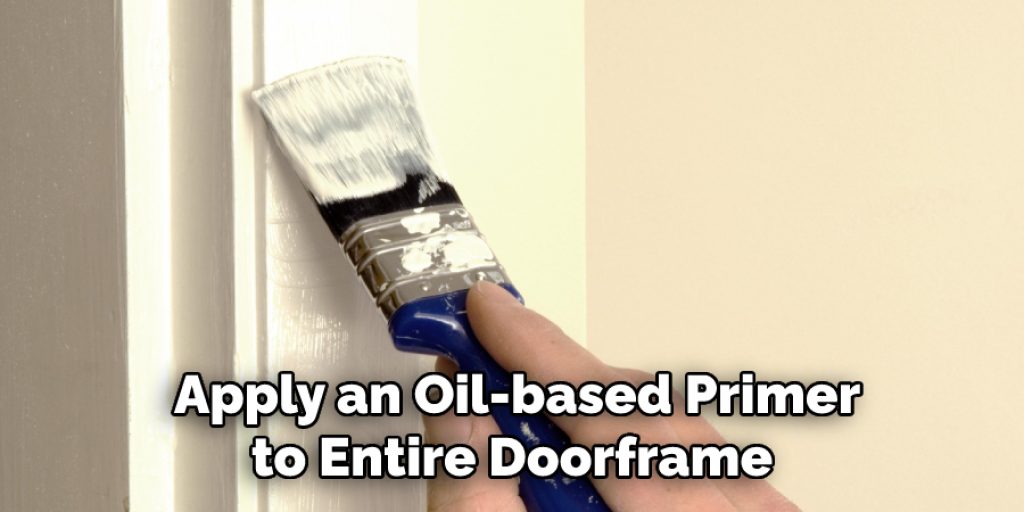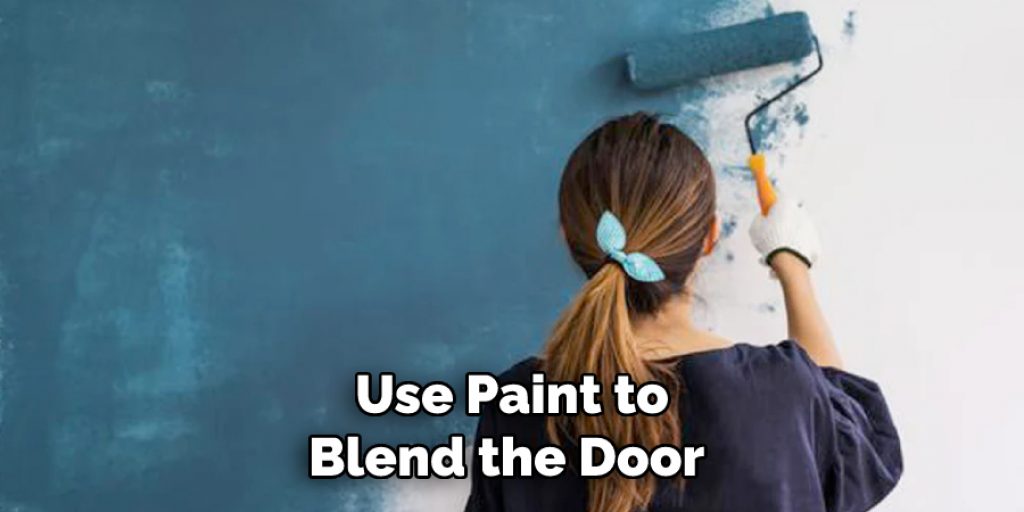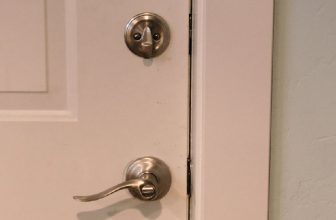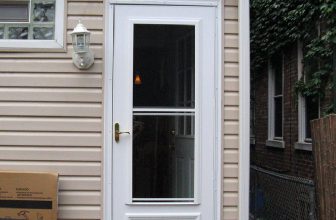How to Hide an Unused Door
Hiding an unused door is a great way to increase the security of your home. An old, unused door can provide easy access for criminals or vandals, so it’s important to make sure that you hide them effectively. Additionally, hiding an unused door can help preserve the aesthetic integrity of your home and help maintain a consistent look throughout the space. With the right tools and a bit of effort, you can learn to hide an unused door from view.

One of the main advantages of hiding an unused door is that it helps create a more aesthetically pleasing space. By covering up doors that are seldom used, homeowners can avoid having large gaps in their walls, which can make a room look unfinished or cluttered.
Also, hiding an unused door can help prevent dust and dirt from entering the area and help conserve energy by preventing drafts. In this blog post, You will learn how to hide an unused door in detail.
Materials You Will Need
- Paint
- Sandpaper
- Primer
- Wallpaper or fabric
- Tape measure
- Level
- Caulk
- Drill and screws
- Hooks or hangers
- Mounting brackets
Step-by-Step Processes for How to Hide an Unused Door
Step 1: Inspect the Door’s Frame
First, inspect the frame of the door to ensure that it is still sturdy and in good condition. You need to remove any hardware, such as doorknobs or hinges, to hide an unused door. The best way to do this is by using a screwdriver to unscrew the screws and then gently pry off the door hardware.
Step 2: Fill the Screw Holes with Wood Putty
Once you have removed the door hardware, use wood putty to fill in any holes left by the screws. This will help ensure that your project looks neat and finished when it is complete. The next step is to sand down the frame of the door. This will help create a smooth surface for painting or staining.
Step 3: Apply Primer
Next, apply an oil-based primer to the entire doorframe. This will help your paint adhere better and also seal any existing imperfections in the wood. After the primer has dried, it’s time to paint or stain the door frame. Depending on your preference and existing décor, you may want to use a light color for a subtle look or a bold color that stands out.

Step 4: Hang Wall Decorations
Once your painting or staining is finished, you can hang any wall decorations that you want to use to conceal the door. This could include a large piece of art or a mirror. Placing furniture directly in front of the door will help conceal it even further and make it look like there is no unused door behind it.
Step 5: Hang Curtains or Beaded Strands
If you prefer a more decorative look, consider hanging curtains or beaded strands over the doorframe to add color and interest. You should now have a fully hidden unused door that perfectly blends in with your home’s décor.
By following these steps, you can easily hide an unused door and make it look like part of your home’s existing décor. With a little bit of effort, you can take unused space and transform it into something beautiful.
Safety Precautions for How to Hide an Unused Door
- Consider the risks involved in hiding an unused door – including potential trapping, entrapment, and other safety hazards that could occur if someone were to discover the hidden entrance.
- Ensure any existing doors are properly secured from the outside with a deadbolt or similar locking mechanism.
- Place furniture, wall hangings, or decorative elements in front of the door to make it less noticeable.
- Use wallpapers and paint to blend the door with the surrounding walls seamlessly.
- Make sure any exposed locks are either disabled or secured against potential tampering.
- If hiding the door requires carpentry work, hire a professional contractor who is experienced in such renovations.
- Ensure the area around the door remains well-lit, and install motion-activated lights to make it harder for anyone to sneak in undetected.
- Always keep emergency exits accessible in case of an emergency or evacuation.

In conclusion, hiding an unused door can be a great way to make your home look more aesthetically pleasing, but it is important to take the proper safety precautions to ensure that no one can get trapped or injured as a result.
How Do You Avoid Creating an Eyesore With Your Door Covering?
When it’s time to cover an unused door, there are a few things to consider in order to avoid creating an eyesore. First, decide what kind of cover you want to use. You can opt for anything from a full wall mural or fabric-covered paneling to decorative mirrors and sliding doors. When choosing your cover, try to pick something that will fit in with the rest of your home decor and won’t be too intrusive.
Once you’ve selected a covering, it’s important to ensure the material is fastened securely and that any gaps or openings are properly sealed. If you can’t attach the covering directly to the wall itself, use sturdy brackets or adhesives. The last step is to make the transition from the covering to the wall seamless.
The last thing you want is an obvious transition that looks like something doesn’t belong with the rest of your decor. To avoid this, use trim or molding around the edges of the covering for a more polished appearance.
How Long Will It Take You to Complete This Project?
The amount of time it will take you to complete the task of hiding an unused door depends on the size and material of your door. Depending on these factors, completing this project could take anywhere from one day to several weeks.
If you choose to hang a curtain or blinds, for example, this may be a simpler process that will be quicker than if you decide to paint or wallpaper the door. Consideration of the size and material of the door, as well as available resources, will determine how long it will take you to complete this task.

To begin hiding an unused door, cleaning and inspecting the surface for any damage that could prevent proper adhesion is important. Measure the area to ensure that the product you choose will fit properly, and measure twice before cutting the material. If you are hanging a curtain or blinds, make sure to use screws that are appropriate for the door frame and mount them securely.
How Much Does It Cost to Hide an Unused Door?
The cost of hiding an unused door depends on the type and size of the door and how you plan to go about hiding it. Standard doors typically range in price from $200-$400. The cost can be higher if you want to customize your materials, such as solid wood panels or glass inserts. If you hire a professional to do the job, you should expect to pay $500 and up.
If you’re going the DIY route, you have some affordable options available to help conceal your unused door. Paint is one of the most cost-effective ways to hide an unused door. A gallon of paint usually costs around $30, but the price can quickly increase if you need to purchase additional supplies, such as primer, tape, and rollers. If you’re comfortable with hanging wallpaper or wall decals, these are also great options for hiding an unused door that won’t break the bank.
How Can You Maintain the Door Covering Over Time?
Maintaining the door covering to hide an unused door can be a challenge, but with regular upkeep, it is possible. Regularly check for any signs of wear and tear or damage as part of normal maintenance. If you notice any fading or peeling of your wall covering, touch up the paint or wallpaper as needed.
The cover should also be wiped down with a damp cloth and mild detergent to keep it looking fresh. If the door is made of wood, you may want to apply a coat of protective sealant regularly to prevent fading or cracking over time. Additionally, ensure that any furniture placed in front of the door is rearranged occasionally to avoid wear marks on the covering. Following these simple steps will help you maintain the hiding of your unused door and keep it looking like new.

Conclusion
In conclusion, hiding an unused door is a great way to keep your home looking neat and tidy. There are a variety of ways to accomplish this task, such as painting the door or using curtains or tapestries. You can also hide it behind furniture, stack boxes in front of it, or even create wall art around it.
Whichever approach you decide to take, it’s always important to make sure that you follow safety protocols and adhere to local building codes. With the right materials and tools, you can easily hide an unused door without causing any damage. I hope this article has been beneficial in learning how to hide an unused door. Make Sure the precautionary measures are followed chronologically.




